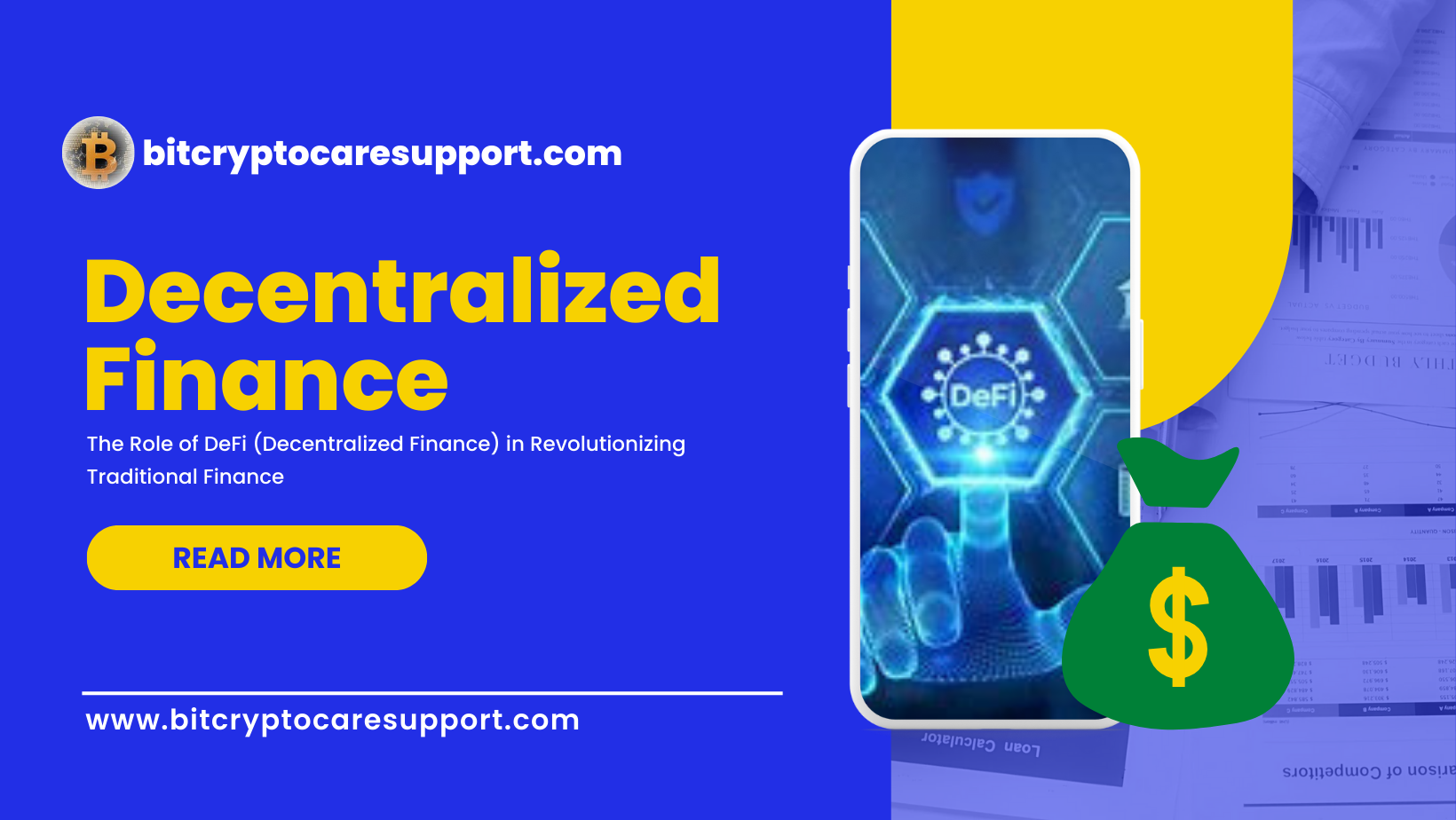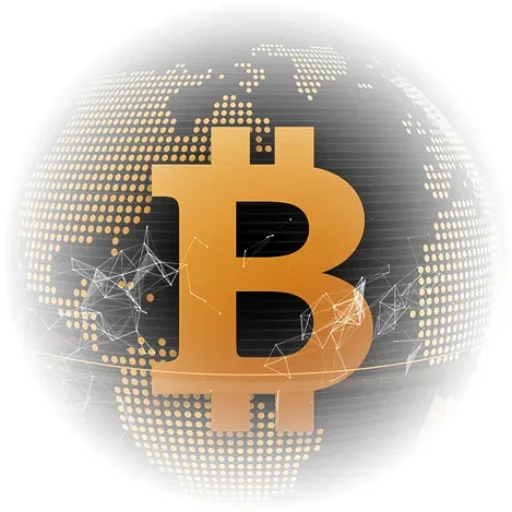
Over the past decade, decentralized finance (DeFi) has emerged as a transformative force in the world of finance. By utilizing blockchain technology, DeFi offers an alternative to traditional financial systems, allowing users to access financial services without relying on intermediaries like banks or financial institutions. Cryptocurrencies such as Bitcoin, Polkadot, and stablecoins like USDT are at the heart of this financial revolution, offering opportunities for users to engage in lending, borrowing, trading, and investing in a decentralized manner.
This article explores how DeFi is revolutionizing traditional finance, highlighting its benefits, challenges, and key players. We’ll also examine how platforms like BitFinex, known for their excellent customer support, are contributing to the growth of decentralized finance.
1. What is Decentralized Finance (DeFi)?
DeFi, or decentralized finance, is a broad term that refers to financial systems built on blockchain networks. Unlike traditional finance, which relies on central institutions like banks, DeFi operates on decentralized networks like Ethereum, Polkadot, and others. These platforms utilize smart contracts, self-executing programs that automatically enforce agreements, to facilitate financial transactions without intermediaries.
Bitcoin, the first cryptocurrency, paved the way for decentralized finance by offering a peer-to-peer payment system. Since then, other blockchain projects like Polkadot have expanded the DeFi ecosystem, allowing for more sophisticated financial products like decentralized exchanges (DEXs), lending protocols, and stablecoins such as USDT.
2. The Key Components of DeFi
Several key components define decentralized finance, each contributing to its role in transforming traditional financial systems. These include:
- Decentralized Exchanges (DEXs): Platforms like Uniswap and PancakeSwap allow users to trade cryptocurrencies directly without the need for a centralized exchange. This reduces reliance on third-party intermediaries, providing greater control and security for users.
- Stablecoins: Cryptocurrencies like USDT (Tether) are pegged to traditional fiat currencies, offering a stable store of value. Stablecoins bridge the gap between volatile cryptocurrencies like Bitcoin and more stable fiat currencies, making them a crucial component of the DeFi ecosystem.
- Lending and Borrowing: DeFi protocols like Aave and Compound allow users to lend and borrow digital assets without the need for banks. These platforms use smart contracts to facilitate loans, with interest rates determined algorithmically based on supply and demand.
- Yield Farming and Staking: Users can earn interest or rewards by participating in yield farming or staking, where they lock up their digital assets in DeFi protocols to support network operations.
3. The Benefits of DeFi Over Traditional Finance
DeFi offers several advantages over traditional finance, which has driven its rapid adoption:
- Accessibility: DeFi platforms are open to anyone with an internet connection, removing barriers to entry that exist in traditional finance. Users don’t need a bank account or credit history to participate in DeFi, making it accessible to underserved populations globally.
- Transparency: Since DeFi operates on public blockchains, all transactions are visible and verifiable. This transparency reduces the risk of fraud and ensures accountability within the financial system.
- Control: In DeFi, users have full control over their assets. Unlike traditional finance, where funds are held by banks or other intermediaries, DeFi users maintain custody of their digital assets through private keys.
- Reduced Fees: By eliminating intermediaries, DeFi significantly reduces transaction fees. This is particularly beneficial for cross-border transactions, which can be expensive in traditional finance.
- Innovation: DeFi is constantly evolving, with new financial products and services being developed regularly. This innovation is fueled by the open-source nature of blockchain technology, allowing developers to build on existing platforms and create new solutions.
4. Challenges Facing Decentralized Finance
Despite its many benefits, DeFi also faces several challenges that must be addressed for it to achieve mainstream adoption:
- Security Risks: While DeFi platforms are built on secure blockchain technology, they are not immune to hacks or vulnerabilities. In recent years, several high-profile DeFi platforms have been targeted by hackers, resulting in significant losses for users.
- Regulatory Uncertainty: Governments and regulatory bodies around the world are still grappling with how to regulate DeFi. While some countries have embraced it, others have imposed restrictions, creating uncertainty for developers and users.
- Scalability Issues: As DeFi platforms grow in popularity, they face scalability challenges, particularly on networks like Ethereum. High transaction fees and slow processing times can deter users from participating in DeFi.
- User Experience: For non-technical users, navigating DeFi platforms can be daunting. The complexity of setting up wallets, managing private keys, and interacting with smart contracts can be a barrier to entry for some users.
5. Bitcoin’s Role in Decentralized Finance
Bitcoin, the first and most well-known cryptocurrency, plays a crucial role in the DeFi ecosystem. As a decentralized digital currency, Bitcoin introduced the concept of peer-to-peer transactions without intermediaries. While Bitcoin itself is not a DeFi platform, it has paved the way for the development of decentralized financial services.
Many DeFi platforms allow users to leverage Bitcoin as collateral for loans or participate in decentralized exchanges. The growing popularity of Bitcoin has also led to the development of wrapped Bitcoin (WBTC), which allows Bitcoin to be used on other blockchain networks like Ethereum.
6. Polkadot’s Contribution to DeFi
Polkadot is another major player in the decentralized finance space. It is a multi-chain network that allows different blockchains to interoperate, making it easier for developers to build and deploy DeFi applications. Polkadot’s unique architecture enables faster and cheaper transactions compared to traditional blockchain networks like Ethereum, addressing one of the key scalability challenges facing DeFi.
By enabling cross-chain compatibility, Polkadot opens up new possibilities for DeFi, allowing assets to move seamlessly between different blockchain ecosystems. This innovation is expected to drive further growth and adoption of decentralized finance in the coming years.
7. Stablecoins Like USDT in DeFi
Stablecoins, particularly USDT (Tether), play a pivotal role in DeFi by providing a stable store of value. Unlike Bitcoin or Polkadot, which can be highly volatile, USDT is pegged to the US dollar, making it a more predictable asset for users who want to avoid the risks of price fluctuations.
In the DeFi space, USDT is commonly used for lending, borrowing, and trading. Its stability makes it an attractive option for users who want to participate in DeFi without exposing themselves to the volatility of other cryptocurrencies.
8. The Role of BitFinex in Supporting DeFi Users
BitFinex, one of the largest cryptocurrency exchanges, has been a key player in supporting the DeFi ecosystem. Known for its robust platform and excellent customer support, BitFinex provides users with access to a wide range of digital assets, including Bitcoin, Polkadot, and USDT.
In addition to offering a secure trading platform, BitFinex has also integrated with several DeFi protocols, allowing users to access decentralized financial services directly from the exchange. The platform’s commitment to customer support ensures that users can navigate the complex world of DeFi with confidence, knowing that they have access to reliable assistance if needed.
9. How DeFi is Disrupting Traditional Financial Institutions
DeFi is not just an alternative to traditional finance—it is actively disrupting it. By offering decentralized alternatives to traditional financial services, DeFi is challenging the dominance of banks and financial institutions. This shift is particularly evident in areas like lending and borrowing, where DeFi platforms allow users to access loans without the need for a bank or credit check.
In addition, DeFi is changing the way people invest. Through decentralized exchanges and yield farming, users can earn returns on their investments without relying on traditional stock markets or financial advisors. This democratization of finance is empowering individuals to take control of their financial futures in ways that were previously impossible.
10. The Future of DeFi and Traditional Finance
As decentralized finance continues to grow, its impact on traditional financial systems will become even more pronounced. While it is unlikely that DeFi will completely replace traditional finance, the two systems are likely to coexist, with DeFi offering alternatives to traditional services.
For DeFi to reach its full potential, several challenges must be addressed, including security risks, scalability, and regulatory uncertainty. However, with continued innovation and support from platforms like BitFinex, the future of DeFi looks promising.
In last, DeFi is revolutionizing the world of finance by providing decentralized alternatives to traditional financial services. With cryptocurrencies like Bitcoin, Polkadot, and stablecoins like USDT at its core, DeFi offers users greater control, transparency, and accessibility. As the ecosystem continues to evolve, DeFi has the potential to reshape the financial landscape, empowering individuals and challenging the dominance of traditional financial institutions.




Pingback: Unlocking Web 3.0: A Guide to Decentralized Applications (dApps)
Pingback: Cryptocurrency and Global Economic Development